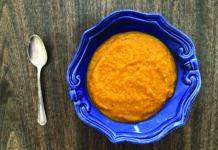Answer : Comparing canned salmon (liquids drained) with an equal quantity of cooked fresh salmon, each offers some nutritional advantages. The differences derive from how canned fish is processed, and from the fact that bones are included in canned salmon. Those edible bits of bone give canned salmon significantly higher levels of calcium (18 times as much) and phosphorus per serving than fresh salmon. Canned salmon also has more vitamin D. On the downside, canned salmon contains more than six times as much sodium-399 milligrams per 100 grams (about 3.5 ounces)- as fresh salmon. Both canned and fresh salmon give you roughly the same amount of protein, 22-23 grams per 100 grams.
Some of the fat found in fresh salmon is lost in processing, meaning canned salmon has only two-thirds the calories of the same amount of the cooked fresh fish. Unfor – tunately, some of the heart-healthy omega-3 fatty acids that salmon is prized for get lost as well; canned salmon has only about half the total amount of the two most important omega-3s, EPA and DHA, found in a comparable serving of fresh salmon.
So canned salmon can be part of a healthy diet, though youll need to eat it more frequently to get enough omega-3s.



















